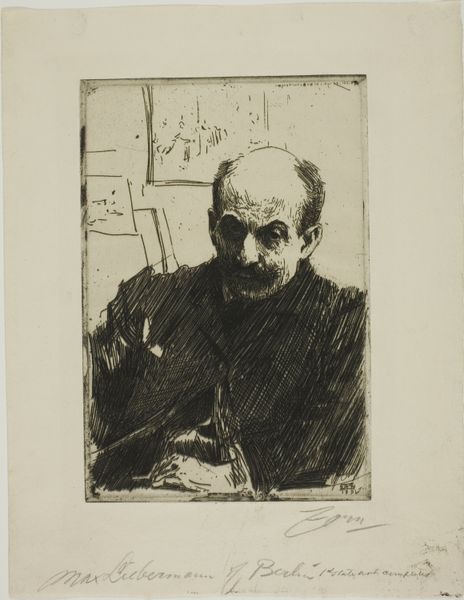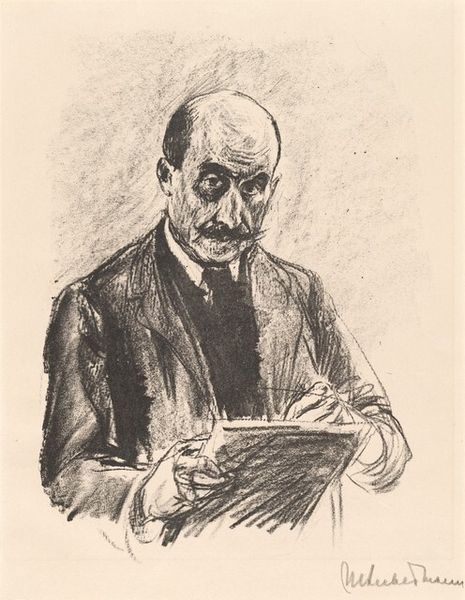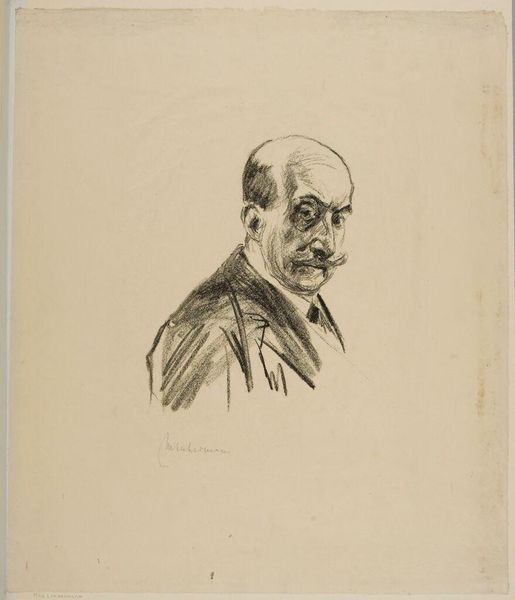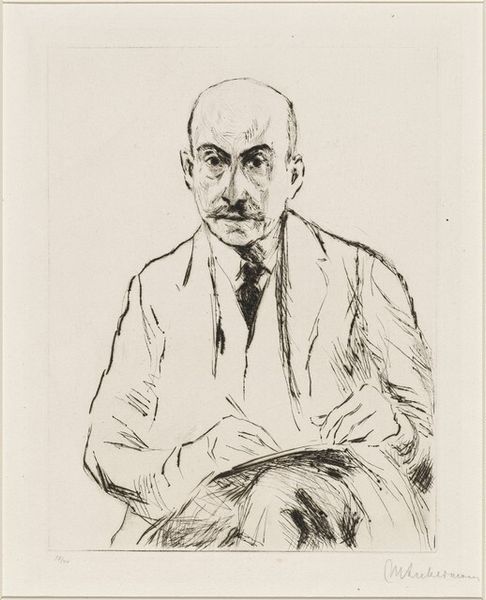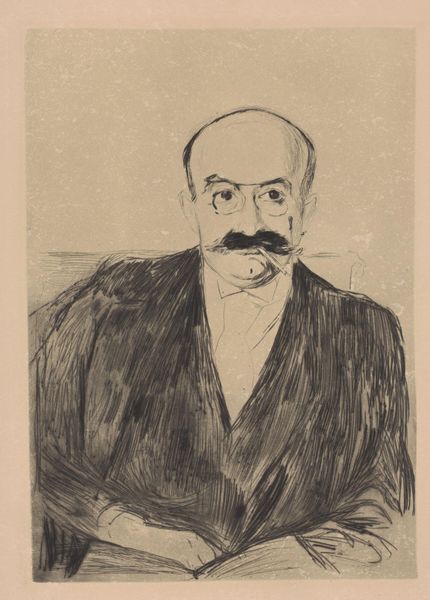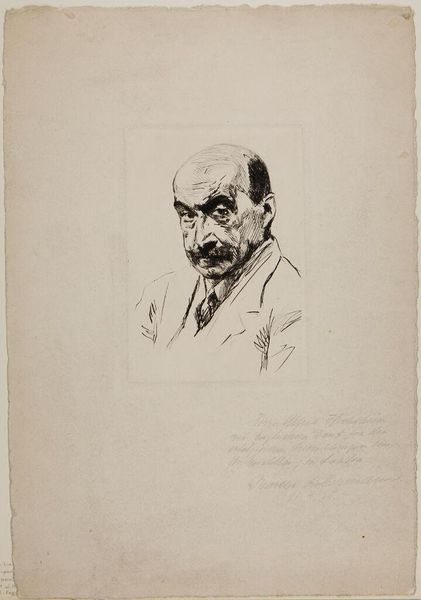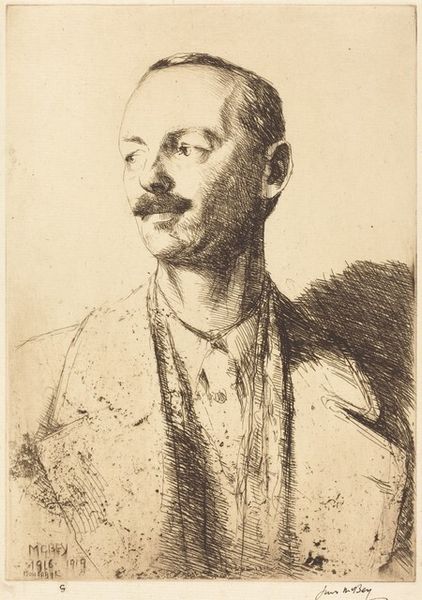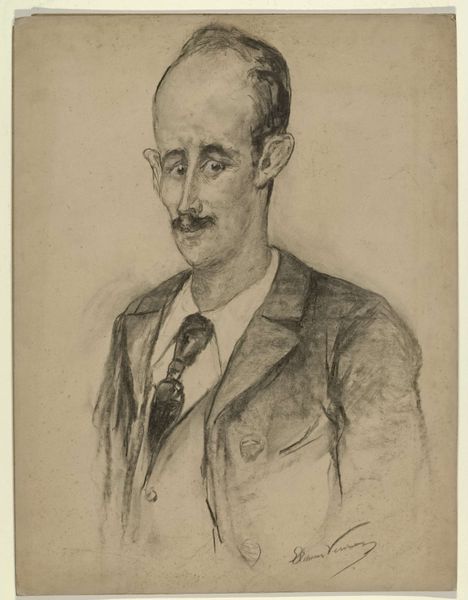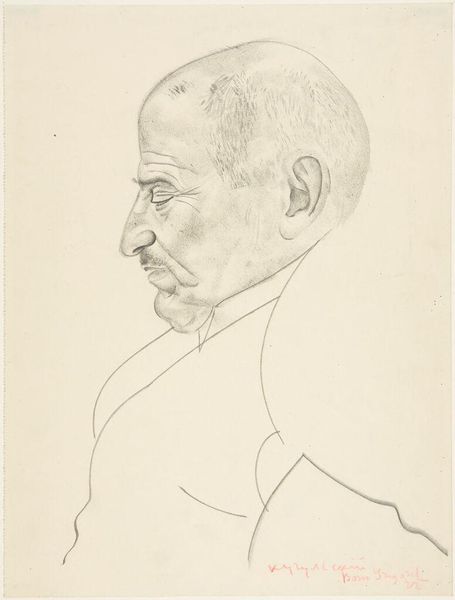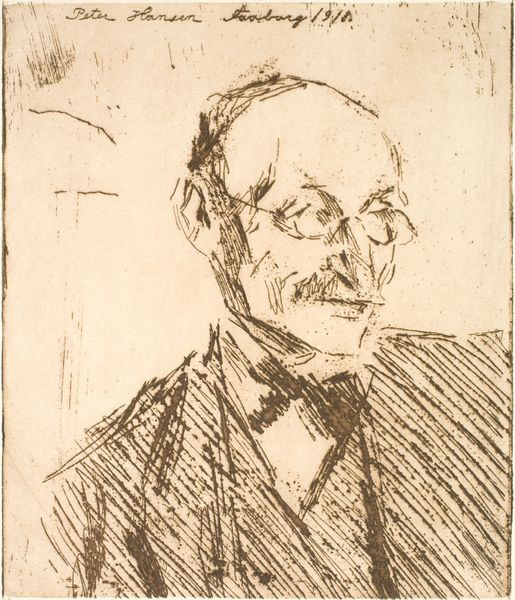
Dimensions: plate: 24.5 x 19.6 cm (9 5/8 x 7 11/16 in.) sheet: 46.3 x 36 cm (18 1/4 x 14 3/16 in.)
Copyright: National Gallery of Art: CC0 1.0
Max Liebermann made this self-portrait using etching, a printmaking technique dating back centuries. To create the image, Liebermann would have coated a metal plate with a waxy, acid-resistant substance, then scratched his design into the coating with a needle. The plate was then immersed in acid, which bit into the exposed metal, creating incised lines. The plate is inked, and then wiped clean, with ink remaining only in the etched lines. Dampened paper is then laid on the plate, and run through a press, transferring the image to the paper. The resulting print, like this one, has a distinctive character, with a slightly raised surface where the ink has been pressed into the paper. The many steps involved, from preparing the plate to pulling the final print, speak to the skill and labor involved in the process. By engaging with this traditional medium, Liebermann connects himself to a long history of artists who have used printmaking to explore themes of identity, representation, and the creative process itself. The act of creating the print becomes a form of self-reflection, with each line and mark revealing something about the artist's inner world.
Comments
No comments
Be the first to comment and join the conversation on the ultimate creative platform.

